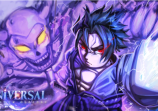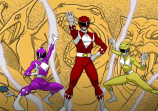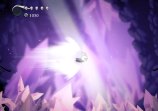As soon as it was announced, Titanfall was one of those games that had an enormous amount of buzz. Maybe it was because the newly formed developer Respawn Entertainment had thrown down the gauntlet against its former employer Activision, seeking to dethrone the publisher's multiplayer king Call of Duty. Or, maybe people just like giant battling robots.
Granted, mechs have been done before, but as far back as I can recall, past mech games just didn't generate this level of interest. MechWarrior felt...clunky. Armored Core was a bit too anime inspired. And Steel Battalion...holy hell, that controller. The thing had a button for the windshield wipers. Immersive, sure, but $200 is a lot to pay for a controller.
Titanfall had appeal from the get-go. Which is interesting, because as the game's director Steve Fukuda writes in the artbook's intro, "Titanfall did not start out as Titanfall. Instead, it started with a simple, yet risky question: 'What game should we make?'" The process of making the game that wound up as Titanfall is what's laid out in this book once the team finally came to a consensus. Not the dry stuff like budget talks, and meeting overviews, but the actual creative process, a look into the imagination of the team with detailed and glossy images of what made it into the final project, and what was unfortunately left on the cutting room floor.
Below for example, a completely different pilot perspective showing the all the bells and whistles of the Titan cabin.
Seen above are several of the aliens in the book once considered for inclusion, and if the rumors are true, what might eventually make their way over to the game in future content. But that's another story...
To sum up, the book itself is a godsend for any and everything that the game never fleshes out quite to your liking. There's no problem with it, but my fear is that its audience is just as limited as that of the game, courtesy of the very nature of Titanfall. The only way possible to play the game is on a Xbox or PC platform, and even then, multiplayer is your only option. That leaves a very specific type of gamer to pick up Respawn's debut, and therein lies the dilemma.
The likelihood of a Wii U or PlayStation console owner picking up the book is very slim, and not to lump people into a group, but it's at least been my experience that the sort of people who frequent the lobbies of multiplayer games aren't the type to have an appreciation for the design work that goes into a game. They play the game to compete, not to oogle at the Frank Lloyd Wright inspired architecture of the buildings on Fracture, or the monolithic skyscrapers of Angel City.
If you have enough humility to admit that you're in this camp, consider this a chance to grab the book and at least try to appreciate what went into the game that was so rabidly anticipated and highly reviewed. Because it's a damn shame for any Titanfall player to miss out on seeing every last drop of artistic talent that went into making this game.








